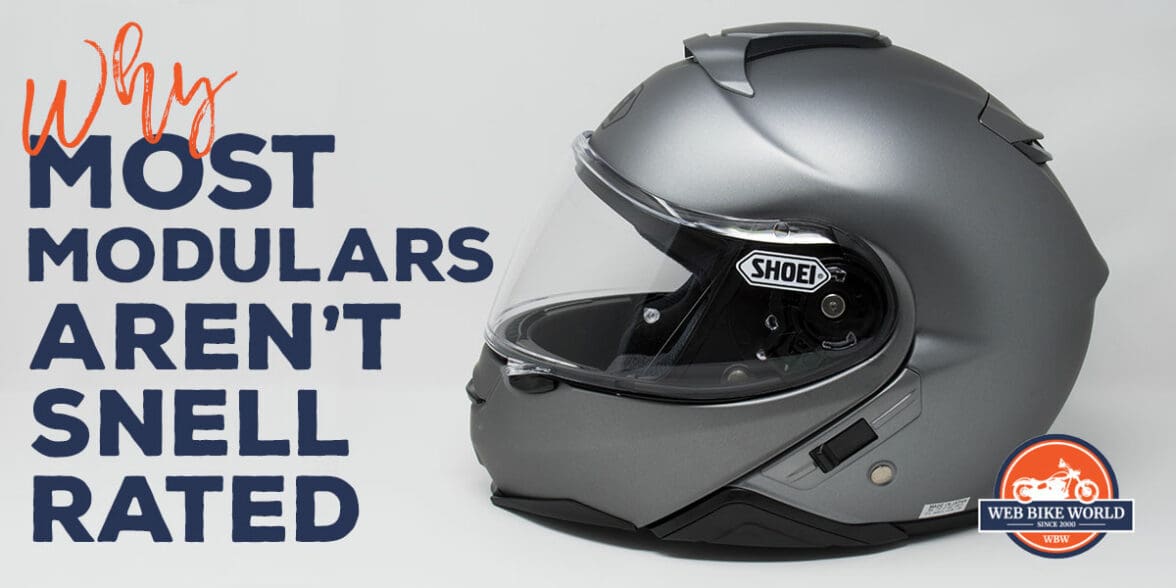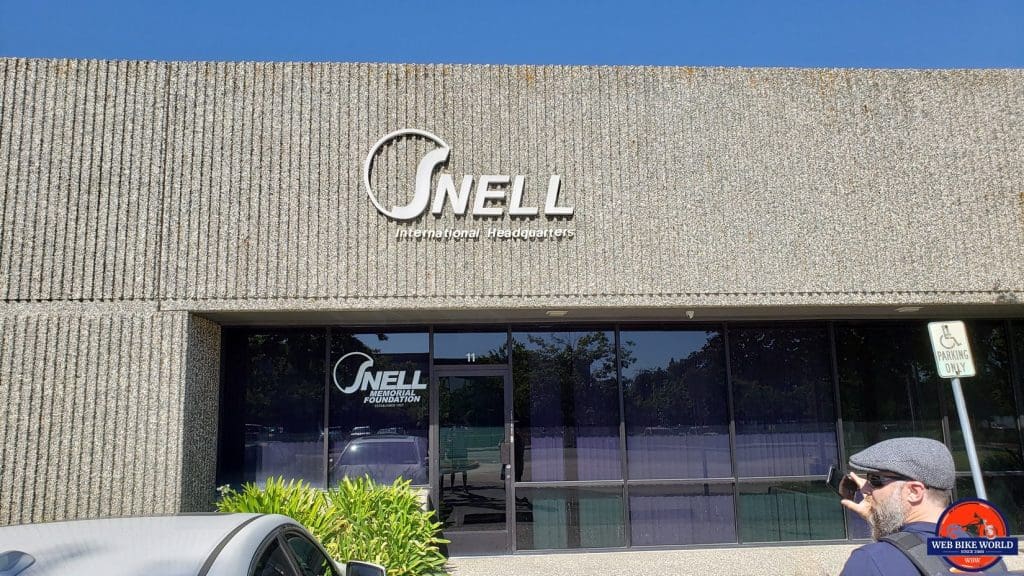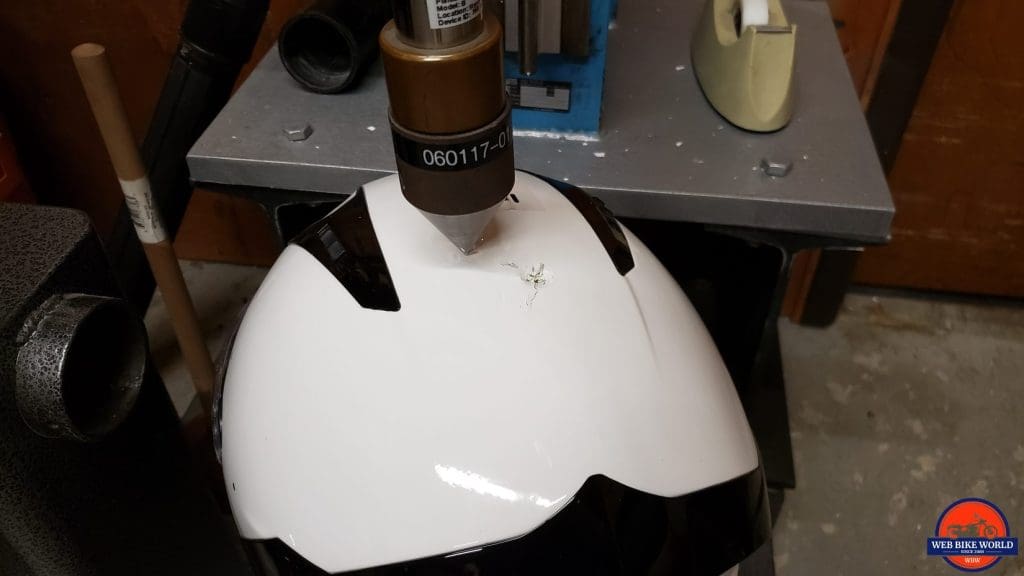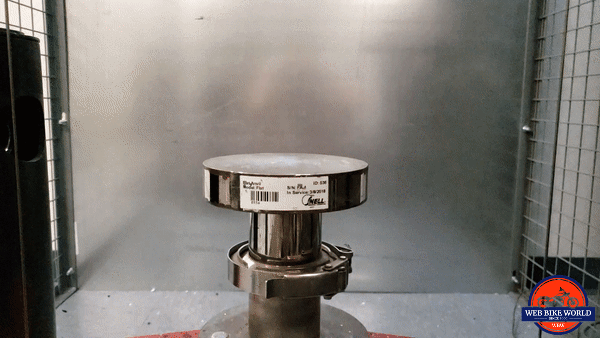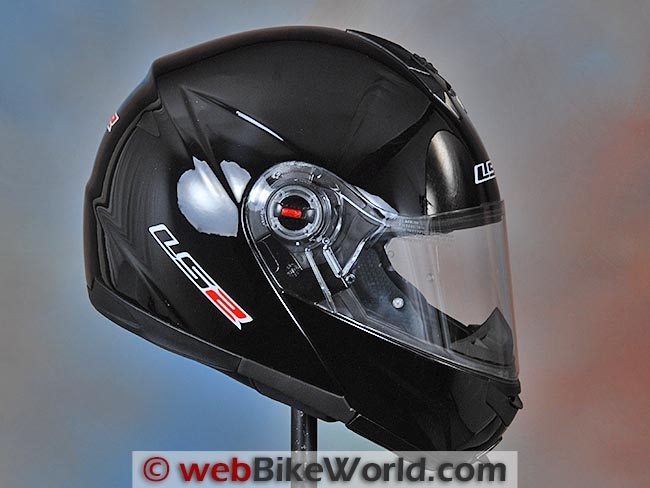There’s always a lot of talk among riders about helmet safety, and it is inevitable in those conversations that Snell gets referenced. If you’re speaking to modular helmets specifically, the reference is usually along the lines of “Snell doesn’t test or certify modular helmets”.
But that isn’t exactly true.
In Jim’s recent review of the Bell SRT Modular helmet, he also suggested that Snell doesn’t certify modulars. Jim’s claim, specifically, was:
“The big question in my mind is: Does adding an internal sun visor lens to the SRT Modular along with a hinged chin bar really disqualify it from receiving the Snell M2015 safety rating given to the very similar SRT?
You may point to the hollow void in the EPS foam needed to house the retractable sun visor in the SRT Modular shell creating an area more prone to failure in a crash as the reason. You’d be correct as far as I can see in Snell’s refusal to certify helmets with this attractive feature in them.”
And fair enough, right? It’s not like Snell has a long-list of approved modular or helmets with internal sun visors.
But, interestingly enough, Ed Becker – Snell’s Executive Director – commented on the article and set the record straight. To quote:
That’s an interesting juxtaposition compared to the rhetoric you commonly hear thrown around when it comes to Snell and modular helmets… or helmets with integrated sun visors, for that matter.
Why Does Snell Certification Matter, Anyway?
Snell is, by far, the most well known third-party helmet safety standard. Sharp is another one that is getting increasingly popular, and we all know DOT/ECE, but Snell has the benefit of a 62-year history and the claim of setting the first genuine helmet standard.
If you’re a wBW reader, you probably already know this.
There is a lot of confusion in the community about the importance, and validity, of the Snell standards. Jim and I flew to the Snell International Headquarters in Sacramento, CA (article coming soon) to get the scoop on what Snell is really about, and I can say with confidence that it isn’t just a race-oriented designation, nor is it irrelevant in comparison to other standards such as DOT or ECE.
If you’re wondering why you should care about Snell certification, there are a few main points to consider:
- The Snell M2010 and M2015 standards are more demanding of energy transference than equivalent DOT/ECE standards.
- Snell impact and penetration tests are more comprehensive than DOT/ECE equivalents, specifically surrounding where the helmet may be tested (ECE has designated “strike” spots, whereas Snell may strike anywhere on or over the testing line that they determine… Jim is going to go deeper into that in his article).
- The Snell standard goes deeper into the types of impacts riders may encounter (and the g-forces they represent).
High-Level: How Does Snell Test Helmets (& What Are They Looking For)?
During our tour of the Snell testing lab, Jim and I helped destroy a series of helmets in the name of answering this question (and others, too). Jim is writing his magnum opus on the journey (and what we learned), so I’ll skip the details and let Jim speak to it when his article is ready.
I’m partial to modular helmets. Right now I’m rotating through the NEXX X.Vilitur, Shoei Neotec II, and SCHUBERTH C4 Pro the most (when I’m not testing something else), but none are Snell certified. There are a few good reasons for that.
What Snell Assesses During Their Testing
Some 2,000 – 2,500 helmets go through their lab in a year, and all of them receive the same series of standardized tests. These tests evaluate:
- Energy transfer through the shell and liner
- Penetration resistance
- G-Forces passed through the helmet under various drop conditions (from heights as high as 15 feet / 4.5 meters)
- How well built and effective the chinstrap is
- How the visor withstands impacts
- And a lot more…
The current standard, M2015, is very stringent and is an evolution of the M2010 standard that one modular helmet did get certified for (more on that below). Unfortunately for fans of modular helmets, some of these tests leave the modular design at a disadvantage.
When it comes to why modulars don’t tend to get certified, Ed was succinct in his response:
“We would be happy to certify any helmet, modular or otherwise, that passes our tests, but we refuse to lower our standards to accommodate modular helmets. The bottom line is that they have to pass the tests.”
Where Modulars Tend to Come Up Short
If you’re a helmet designer or manufacturer, you have a larger objective for a helmet you want to build beyond simply trying to reach a certain safety designation. If a helmet wants Snell certification, it effectively has to be designed for it from day one.
The thing is, Snell helmets are generally a bit heavier and less feature-rich than their DOT or ECE counterparts.
You also have to consider the use case. Are modular helmet buyers likely to ride aggressively on back roads or via time at the track? After all, any rider serious about pushing their limits is going to wear a full-face vs. a modular. So, chances are that your buyer is going to be an average city/commuter that rides at sane speeds on public roads.
That means that if you’re a helmet designer or manufacturer, you’re probably going to want to build a modular helmet that appeals to the largest number of buyers, and those buyers want convenience, comfort, and technology (especially in premium-priced helmets).
All of those wants cause problems for Snell certification as far as modulars are concerned.
Convenience Features
Integrated sun visors, speaker/microphone systems, intercoms, LED lights, and other enhancements have made helmets more functional and enjoyable to wear.
But those same enhancements represent a liability as far as Snell certification goes.
- Integrating the visor has to come at the expense of something.
- The helmet gets thicker (to retain its protective liner and add the visor) or it gets thinner (to make room for the integrated sun visor); both represent a compromise.
- The open/close mechanism has to be integrated into the helmet somewhere.
- Integrating speakers and microphones also comes at the expense of something:
- If speaker pockets are inlaid into the liner, the shell must either get bigger to accommodate the space, or the liner itself gets thinner to accommodate the speaker.
- The speakers/mic and wiring could influence impact safety (COULD, not necessarily will)
Protective Liner
As mentioned above, if you’re integrating convenience features, it’s probably coming at the expense of the amount of liner used in some sections of the helmet (around the sun visor and speakers, specifically).
With a reduced liner, those areas of the helmets have worse performance than other parts of the helmet. While they will still pass DOT or ECE testing, Snell is likely to strike those areas (a strike is an impact target) to see if they pass their standards. Most helmets with these features don’t.
Hinges
A hinge mechanism for the chinbar has to go somewhere, and while they are getting a little smaller and more robust all the time, they still take up valuable real estate.
Hinge mechanisms also add a bit of weight and bulk to the helmet, as well as potentially offering reduced safety where the mechanism is mounted (compared to other parts of the helmet).
A deciding factor in Snell certification is how robust a helmet is. Namely, if it falls apart during testing, it fails. And helmets do fall apart, such as this full-face helmet that lost its visor/hinge mechanism during a drop test from 15 ft / 4.5 m.
The odd’s aren’t great that a modular helmet’s hinge mechanism is going to survive that same impact.
Hinges are also bulky, adding weight and heft to the helmet. More often than not, manufacturers compensate for this by displacing some of the interior impact liner.
September 7, 2019 Update (w/ Snell’s Feedback)
A helmet’s face shield or modular hinge system can break apart from the helmet and still meet the Snell standard, but the helmet itself must remain intact.
Weight
Snell certified helmets, and especially M2015 helmets that aren’t using carbon fiber, tend to be a bit heavier than their DOT/ECE counterparts. Since Snell is more stringent with respect to energy transference, manufacturers generally need to use a more robust shell and a larger interior liner. These additions can increase the size and weight of the helmet.
Given that modular helmets are already heavier than their full-face cousins, few – if any – manufacturers want to make a heavier modular for the purpose of Snell certification.
But There Are Snell Approved Modular Helmets…
If we’re willing to look beyond the M2015 standard and go to the M2010/M2005 standards, you will find a couple of Snell modulars. The first one to pass Snell M2005 certification was the Zeus ZS 3000 back in 2009. Then in 2013 the LS2 FF394 met M2010 standards.
The Latest (& Last?) Snell-Approved Modular Helmet: the LS2 FF394 “Epic”
Rick reviewed the LS2 FF394 in 2013. In the review, he also outlines other helmets that passed the even older M2000 Snell certification.
The FF394 is a fine modular, by the way, that still holds up in both design and function today. If you really want a Snell certified modular, this is the best option you’ve got for now. And even then, they’re getting harder to find.
Oh, and before you think “but helmets older than 5 years shouldn’t be worn”, turns out that’s a myth too (per Snell)… but that’s an article for another time.
Come On Manufacturers- Make Me a Snell Modular!
I make this request fully knowing that my ask is challenging. It’s hard to pack luxury features into a lid while also balancing weight against safety requirements. But still… after seeing how Snell smashes, drowns, torches, shoots, and beats up helmets in the name of science and safety… I want a helmet that can survive that.


